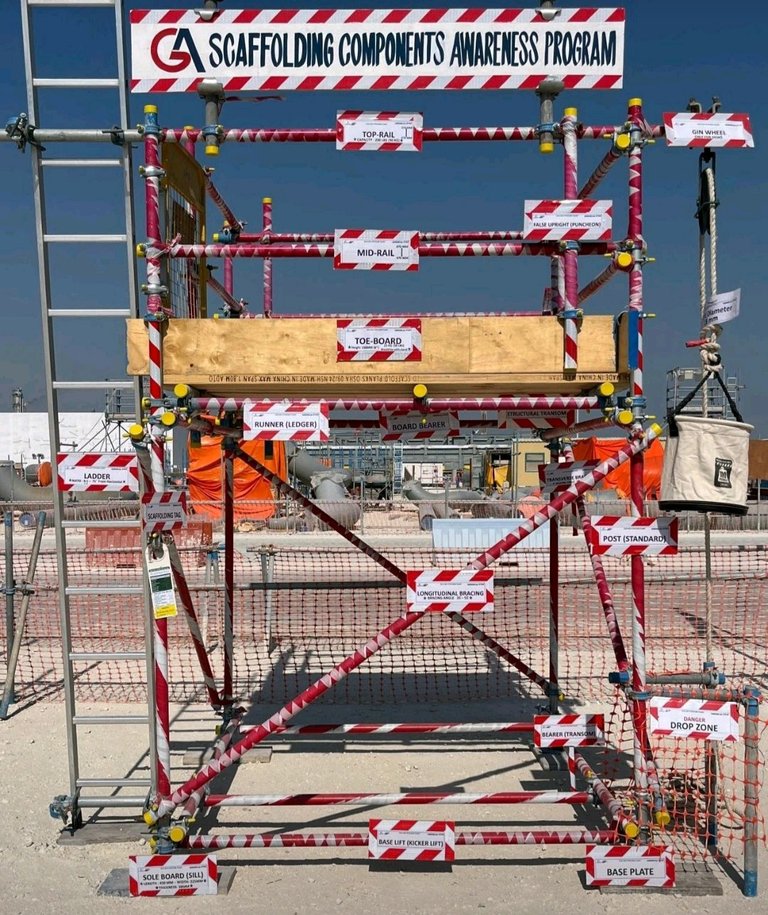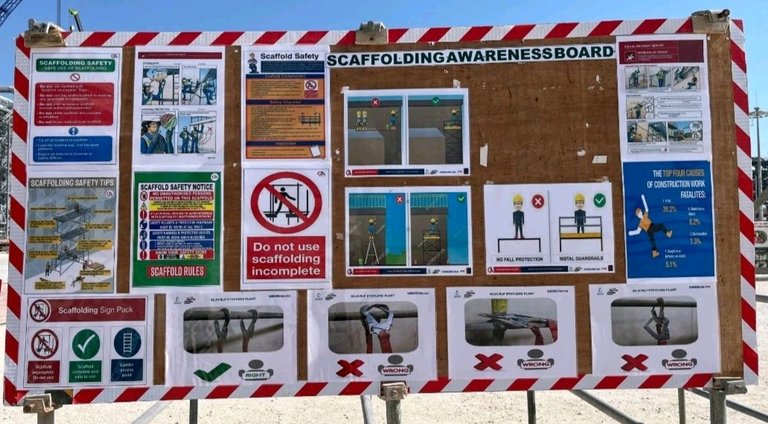UNDERSTAND the key component of scaffolding and HAZARD that can become a RISK.
Basically in industry scaffolding is more than just a temporary structure and not as a permanent structure to be use.
Here is the essential part of scaffolding that everyone should be know before working with the scaffolding.
- STANDARD VERTICAL TUBE
- LEDGER HORIZONTAL TUBE
- TRANSOM
- PLANK/DECKING
- BASE PLATE AND SOLE BOARD
- COUPLER
- GUARDRAI AND TOE BOARD
When someone working with scaffolding they are exposed to HAZARD than can become a RISK to they self or other.
Here is some HAZARD and RISK while using the scaffolding.
STRUCTURAL ISSUES:
- Instability: Scaffolding may become unstable if not properly erected or secured, leading to collapses or falls.
- Overloading: Exceeding the weight capacity of the scaffolding can result in structural failures.
ASSEMBLY AND DISMANTLING:
- Incorrect Assembly: Improperly assembled scaffolding can compromise its stability and pose a risk to workers.
- Incomplete Dismantling: Leaving parts of the scaffold improperly dismantled may lead to accidents during use.
ACCESS AND EGRESS:
- Unsafe Access: Inadequate access points or unsafe ladders can contribute to slips, trips, and falls during ascent or descent.
PLATFORM ISSUES:
- Gaps and Openings: Gaps in the platform or missing guardrails can lead to falls or other accidents.
- Slippery Surfaces: Wet or slippery scaffold surfaces can increase the risk of slips and falls.
ENVIRONMENTAL FACTORS:
- Weather Conditions: Wind, rain, or ice conditions can impact the stability and safety of scaffolding.
- Lighting: Poor lighting around scaffolding areas can contribute to accidents, especially during early mornings or evenings.
TRAINING AND SUPERVISION:
- Lack of Training: Insufficient training for workers on scaffold usage and safety measures can lead to accidents.
- Inadequate Supervision: Lack of proper supervision can result in unsafe practices and behaviors on scaffolding.
EQUIPMENT AND TOOLS:
- Faulty Equipment: Using damaged or faulty scaffolding components can lead to structural failures.
- Falling Objects: Tools or materials dropped from scaffolding can pose a hazard to workers below.
COMMUNICATION:
- Poor Communication: Ineffective communication among workers can lead to misunderstandings and unsafe practices.
HEALTH RISKS:
- Exposure to Hazardous Substances: Workers may be exposed to hazardous substances or fumes during construction activities on scaffolding.
- Exposure to Heat Stress: Causes high air temperatures, radiant heat sources, high humidity, direct physical contact with hot objects, and strenuous physical activities during activities on scaffolding.
It's crucial for workers to be aware of these hazards and for employers to implement safety measures, provide proper training, and conduct regular inspections to ensure the safe use of scaffolding.


